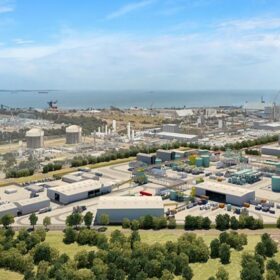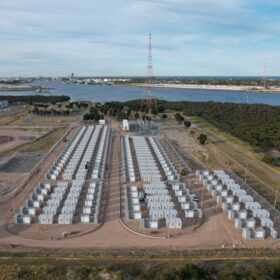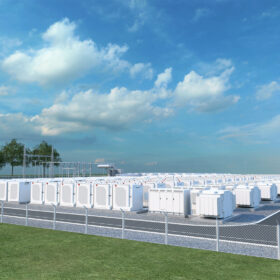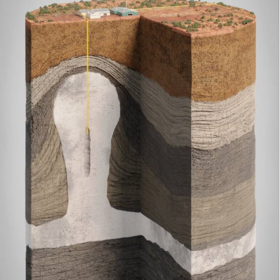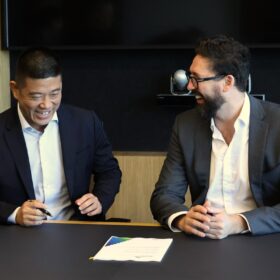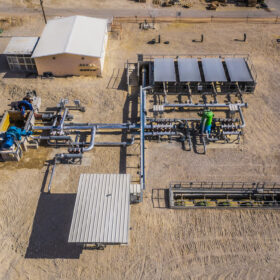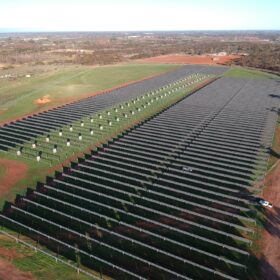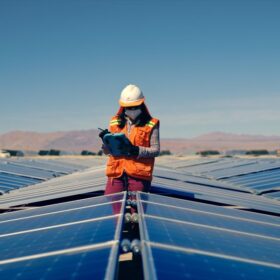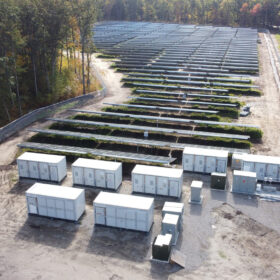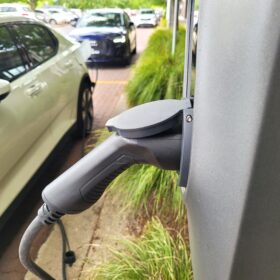IGO lands site for ‘Australian first’ integrated battery material facility
Australian mining and processing company IGO and billionaire Andrew Forrest’s Wyloo Metals will progress plans to build the nation’s first integrated battery material facility in Western Australia after the state government approved the allocation of land for the up to $1 billion project.
AGL gets green light for Torrens Island big battery
Australia’s biggest electricity ‘gen-tailer’ AGL is one step closer to energising its 250 MW/250 MWh grid-scale battery at South Australia’s Torrens Island after receiving the tick of approval from the Australian Energy Market Operator.
Eku lands contract to deliver 500 MWh Canberra big battery
Venture capital fund Macquarie Group’s new battery storage platform Eku Energy has been tapped by the Australian Capital Territory government to deliver the next stage of the Big Canberra Battery ‘ecosystem’ which will support the ongoing rollout of large-scale renewables and rooftop solar.
Adelaide company granted license to explore hydrogen storage in SA’s underground salt caverns
South Australian technology company EntX has been granted a license to explore salt deposits along the western side of the Eyre Peninsula in South Australia for the purpose of hydrogen storage.
5 GW green hydrogen project wins bid for SA’s Eyre Peninsula
Canadian-headquartered clean energy firm Amp Energy has secured the rights to develop a green hydrogen project with up to 5 GW of electrolyser capacity on the Eyre Peninsula in South Australia. Amp has signed an agreement with iron ore miner Iron Road which owns the coastal site, including the Cape Hardy Port Precinct.
Early works begin on Mornington big battery after developer bought by Hong Kong outfit
Australian renewable developer GMR Energy, formerly Maoneng, has started work on its 240 MW / 480 MWh battery project on Victoria’s Mornington Peninsula. The company has entered into an early works agreement with network AusNet, and is aiming to complete the $330 million (USD 220 million) by 2024, two years after the company had originally forecast.
‘Least-cost’ model for compressed air energy storage
Stanford University researchers have created a model to assess how much compressed air storage capacity might be needed for the deep decarbonisation of power systems, while compensating for the variability of wind and solar-based power systems. They applied the model to California’s energy system and found that compressed air could be very competitive on a dollars-per-kilowatt-hour basis.
DC-coupled hybrid project brought online in SA as retailer moves into mid-scale development
A South Australian racecourse has now become a fully operational DC-coupled solar and battery farm. The Berri Energy Project, owned by retailer Flow Power, is part of the company’s strategy to build up to 50 MW of mid-scale (sub 5 MW) projects to supplement its offtake portfolio, Flow Power COO Byron Serjeanston told pv magazine Australia.
Miner provides shot in the arm for Sun Cable mega project
Sun Cable’s troubled $30-plus billion (USD 20 billion) mega solar and storage project has received a welcome boost with resources company Tivan announcing it has penned a deal with the developer for the potential offtake of up to 300 MW of renewable electricity to support a planned critical minerals processing facility in the Northern Territory.
Top five battery energy storage system design essentials
Before beginning BESS design, it’s important to understand auxiliary power design, site layout, cable sizing, grounding system and site communications design.
